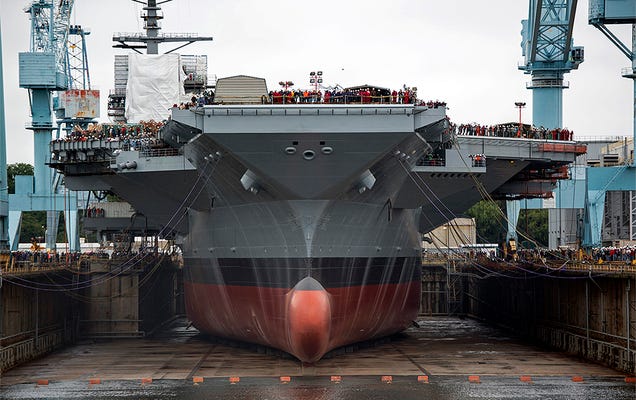A long held assumption from Airbus is bigger will always trump anything better. Even when its own product is actually smaller, it still talks bigger. Boeing is faced with reality just as much as Airbus faces its reality. Boeing is presenting the better is the best model. However, every customer's frontal lobes don't often align with the best intended sentiments. They like to hear a huckster, and go in the tent and watch the fat lady do her thing at the carnival. They just can't help themselves. Its human psychology 101. Impulsive pride overlooks the blemishes, as it goes for the spiel, with some sense for eternal satisfaction.
This is where the airplane market finds itself. One faction establishes a premium, while the other gloats its way into a packed house. The street vendor mentality rules the quick sale, as it bloviates over talking points as if it were real. People love to hear why buying the knock-off is a shrewd choice. The buyer is more interested in being oh-so-clever, than becoming rooted in the value of becoming oh-so-smart.
The buyer could be psychologically impaired, as it takes its thinking momentum forward based on unrelenting pride of purchase. The two mega builders have taken different roads for making sales. One depends on the frontal lobe customer pride rationale for its final decision making. Even after all the statistics are absorbed, the mental filters are firmly in place for choosing one over the other. Only when the accountants come back do they realize the psychological momentum has taken a buyer down the wrong road where pride covers the error. The buyer is never wrong is its mantra. "That's the way we always do it", chorus sings out. The deed becomes the company's best practice.
The other builder believes better is best and will win out. That is Boeing's stand.
However, those pesky accountants keep asking questions about the bottom line. One question keeps popping up from the accountant, how is Ethiopian Airlines doing it?
"What do you know about the airline business, Bean counter?", comes a corporate response. Its the Bloviated Clan speaking from Airbus.
Fortuitously for Boeing, there are decision makers who look at the airline business with a keen eye for the bigger picture, rather than a bigger aircraft girth. The 787 is gaining footing as customers go long with a medium wide body. Boeing hopes the 777X family will become the true wide body supreme machine. Airbus who is partially schizophrenic, wants its A-350 in one market as the fat lady and the other market as the efficient lady. Claiming the A-350-900 is a 787 beater and the A-350-1000 is a 777X beater. This suggests being surrounded by Boeing's five types of 787 and 777's, makes a schizophrenic framer of aircraft very dizzy. Therefore, you may count on Airbus saying anything.
A severe psychological disorder is present when it cannot purposefully build a family model for the Wide Body market segment. Some customers like it that way too. The pride factor of having the biggest airplane appendage dominates its rationale, and giving it momentum. No matter how a competitive manufacturer couches the subject, it becomes, a just because we can logic. Money is out of the conversation at that point, because money is not the issue, pride is the issue.
This psychology pervades travelers as well as the airline maker. The only thing stopping pride is the fall. Therein lies the danger. The fall comes from making assumptions based filtered observations, that are heavily influenced by a predisposition for shiny big objects. The slippery slope has such a structure.
Boeing proposes no slippery slope in which to embellish. It proposes a dedication to proven innovation, which is forward looking through its environmental approach, and operational efficiency (whew). Better air inside and out is the big picture. Boeing products are looking at earths ecology and passenger experience in spite every attempt of inserting more seats, I mentioned the MORE SEAT BANE in a prior blog.
The addiction to pride is like a drug where both manufacturer and customer can't help themselves and must adhere with its steady progression downward in its scheme called "a slow motion fall". Its is advantageous a fork in the road exists for both manufacturers. One goes the high road, which seems a bit harder, and the other goes the long windy low road. As it obviously becomes a bit ambiguous in nature, but pleasant to the senses for any lost sensibility.
Boeing has chosen the difficult high road, which is an outstanding view for manufacturer, airline customer, and passenger. The psychology is found in the product itself and not the sales pitch. As it promotes clean breathable air inside and clean comfortable flight lines outside even during rough air. The sensual awareness results from its innovative spirit built into the aircraft. Space and how you use it, is the final frontier.
_at_night.jpg)








